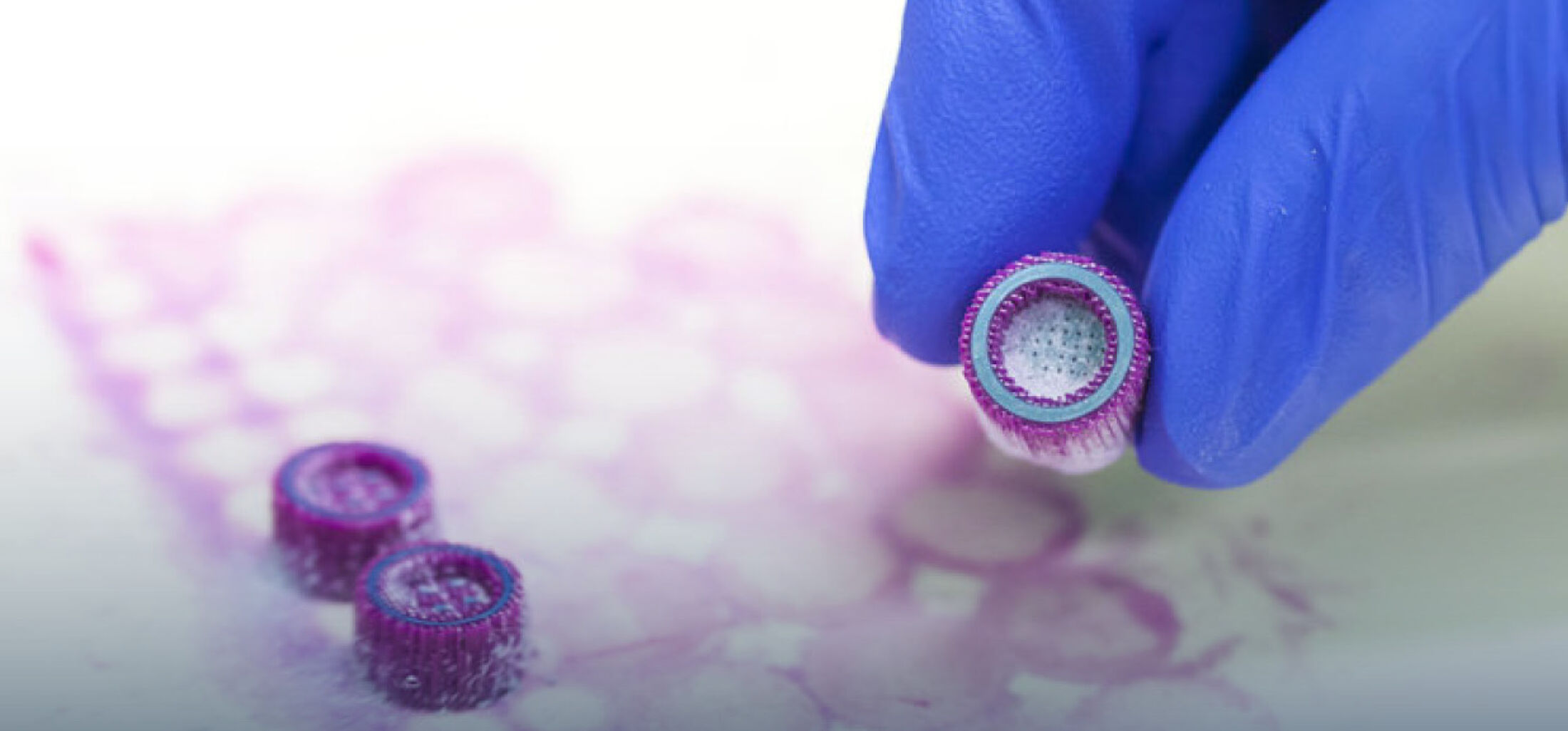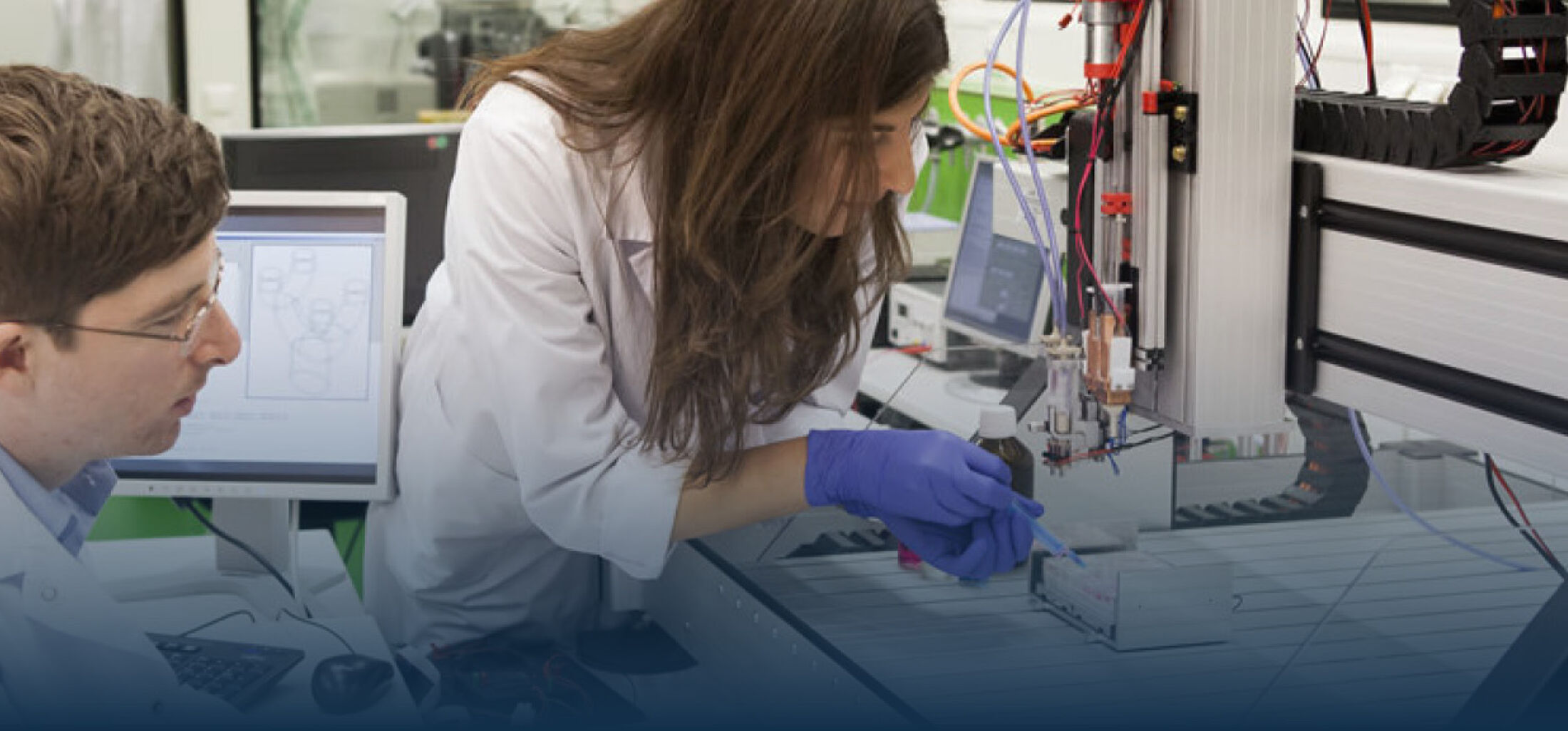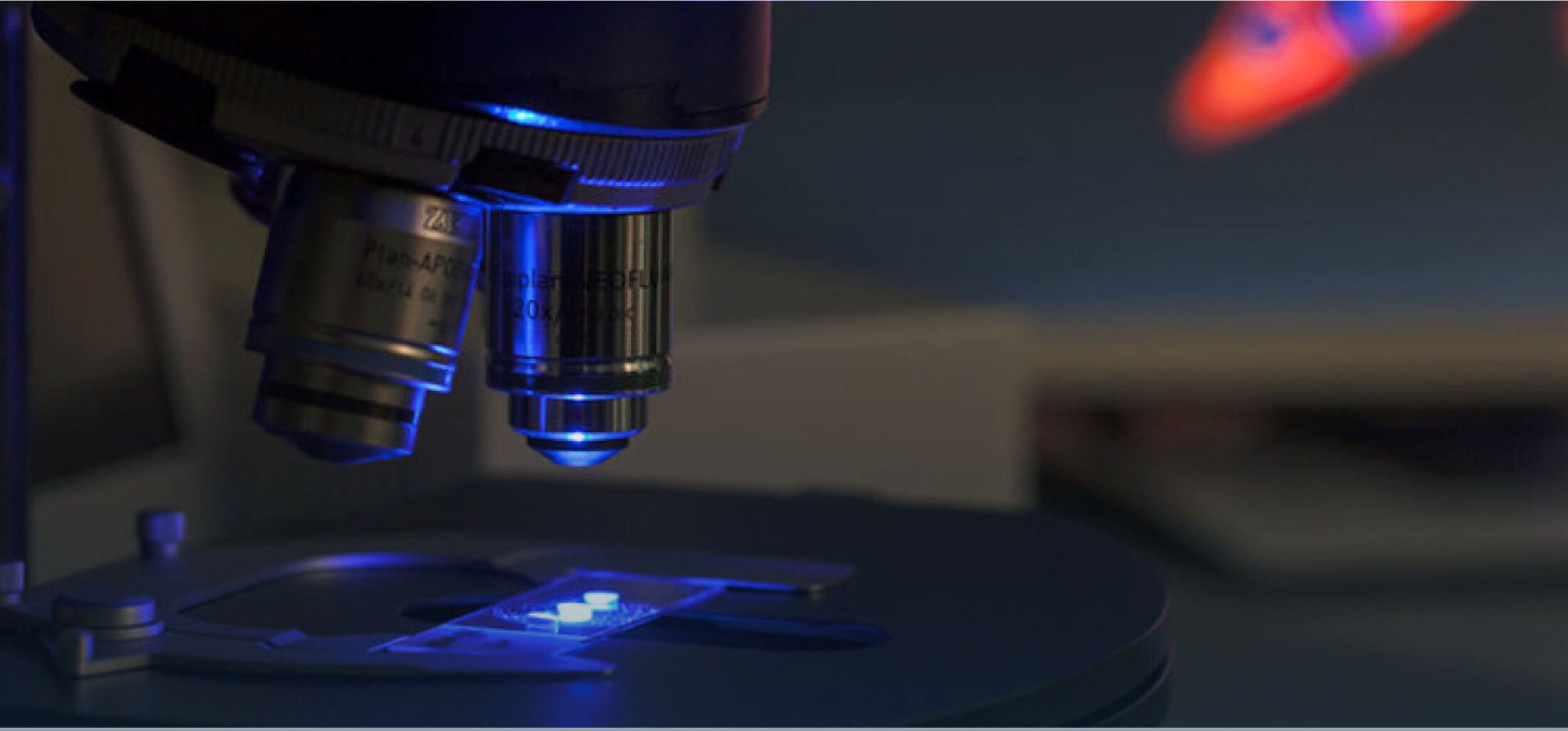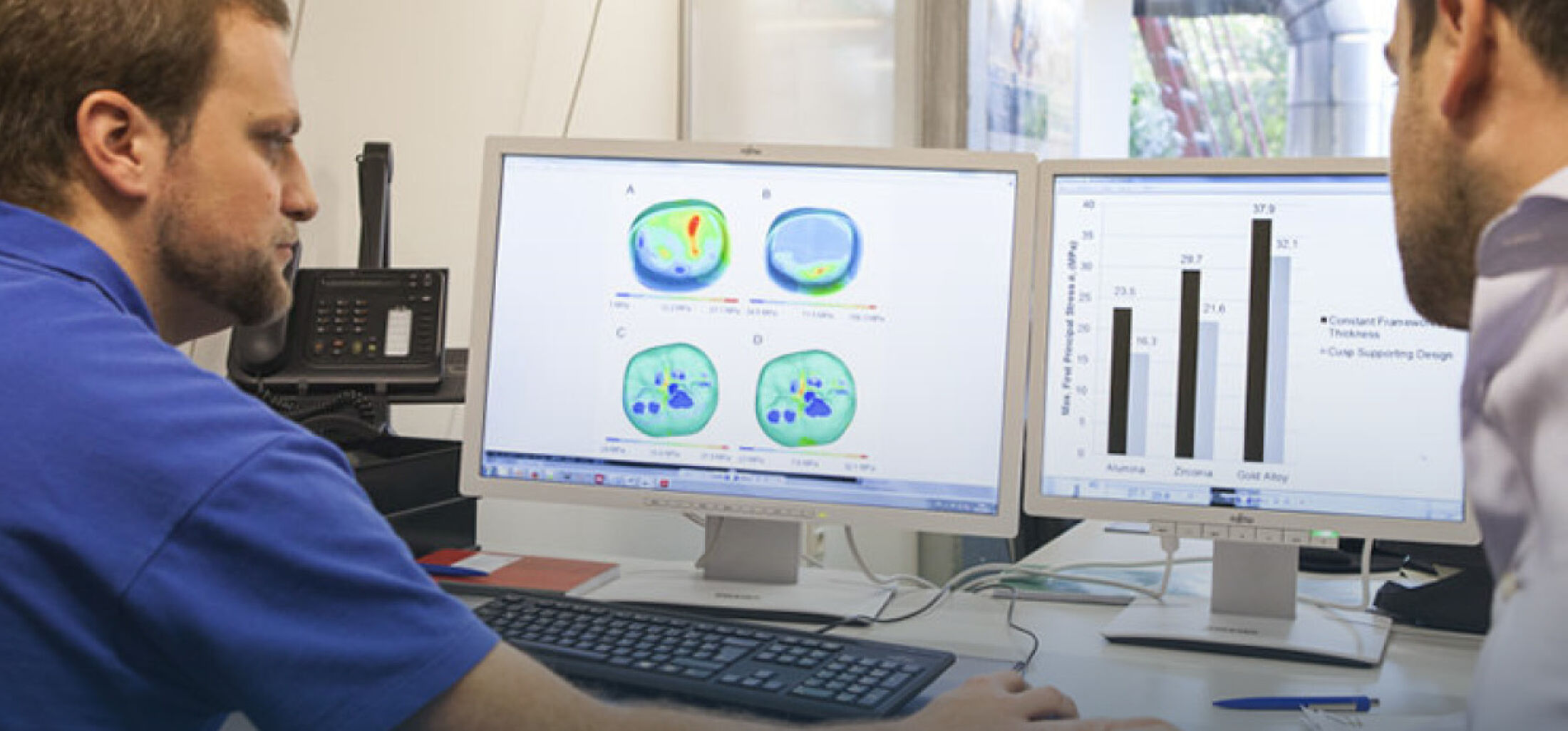DynaBite
Development of a 3D sensor for the patient-related simulation of the mastication process as a basis of highly precise dentures considering the dynamic occlusion
The term craniomandibular dysfunction (CMD) summarizes all complaints regarding muscle and joint functions in the jaw area. For the treatment and prevention of these diseases, the production of precise and patient adjusted dentures under dynamic occlusion movements is crucial. Modern diagnostic imaging and computer-aided manufacturing processes open up new possibilities for the acquisition and implementation of dynamic masticatory principles.
The aim of the project DynaBite is to realize a novel therapeutic tool which may simultaneously capture the tooth surface, with the aid of an intra-oral scanning system, and the movements of the upper and lower jaw in relation to each other. Furthermore, numerical computer simulations of the mechanical stress will be conducted and validated.
Today’s commercially available CAD/CAM systems are based on a purely static occlusion principle and usually require time-consuming corrections of the occlusal surfaces due to contact problems before the restorations may be brought to the patient. Furthermore, the individual anatomy, in particular the individual hinge axis of the mandible as well as the individual chewing and masticatory movements of the patient, cannot be considered in these conventional approaches. Only through the integration of dynamic occlusion into the clinical workflow, which is one of the main aspects of this project, the dentures can be adapted to the individual patient's mandible movements and manufactured with sufficient precision to render further rework unnecessary. The implementation of an integrated scanning system, a combination of the advantages of the joint track record with the optical detection of occlusal surfaces, represents an innovation with immense scientific and commercial potential. This project is conducted in cooperation with another academic partner and two industrial partners and is funded by the German Federal Ministry of Education and Research (Bundesministerium für Bildung und Forschung - BMBF) within the program KMU Innovative Medizintechnik / Hightech-Strategie der Bundesregierung.




